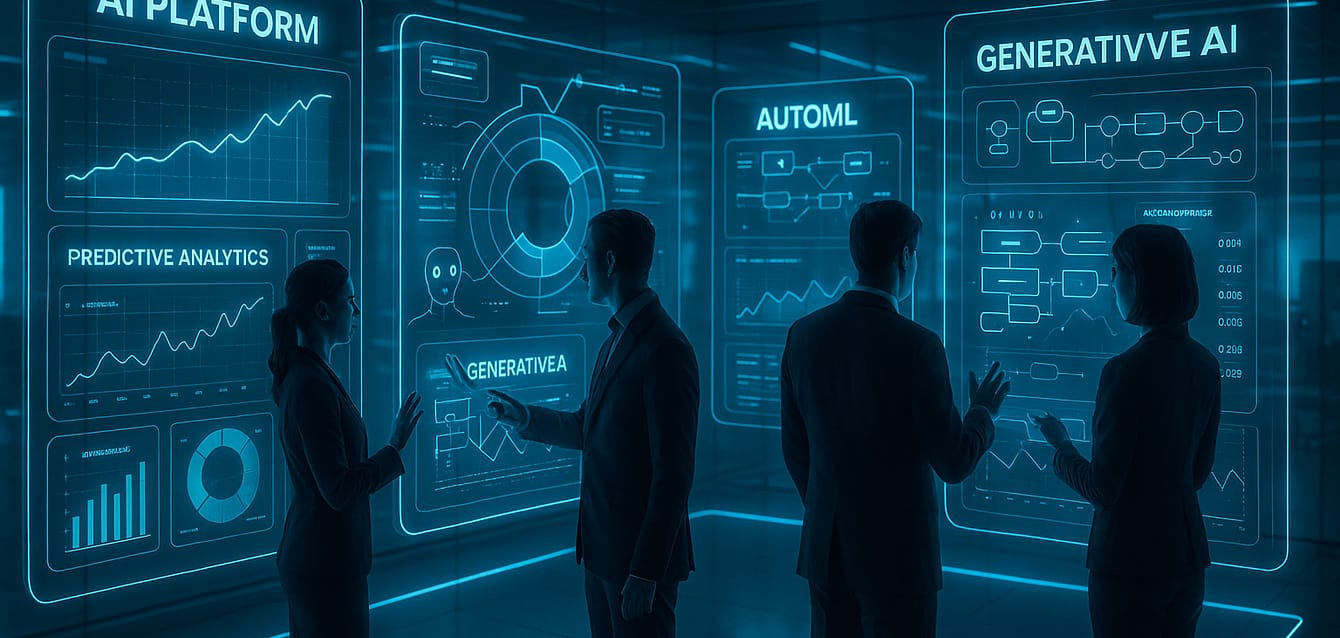1. Introduction: The Power of DataRobot 🤖
In the era of Big Data, the demand for predictive analytics and intelligent automation far outstrips the supply of expert data scientists. DataRobot addresses this challenge head-on. It’s not just another data science tool; it’s a comprehensive Enterprise AI platform designed to manage the entire machine learning lifecycle from raw data to business impact with heavy reliance on automation.
The core promise of DataRobot is simple: to make AI accessible, scalable, and governed for every organization. By automating complex and repetitive tasks, it enables businesses to build and deploy highly accurate models in a fraction of the time, dramatically reducing the time-to-value for AI projects.
2. Core Features: What Makes DataRobot Unique?
DataRobot’s platform is a unified suite of tools covering the complete AI journey. Its standout features include:
Automated Machine Learning (AutoML) – The Engine of Speed
This is the heart of DataRobot. AutoML automatically performs:
- Data Preparation: Handling missing values, encoding categorical variables, and preparing data for modeling.
- Feature Engineering: Creating new, powerful features from the raw dataset to boost model performance.
- Algorithm Selection & Hyperparameter Tuning: It runs hundreds of open-source and proprietary machine learning algorithms (like Gradient Boosting, Deep Learning, and more) in parallel, comparing and ranking them on a Leaderboard to find the most accurate and production-ready model for your specific problem.
MLOps (Machine Learning Operations) and Governance 🛡️
Deploying a model is only the first step. DataRobot provides robust tools to manage models in production:
- Model Deployment: Simple, one-click deployment across various environments (cloud, on-premise, or edge).
- Monitoring: Continuous tracking of model health, including data drift (when incoming data changes) and accuracy decay (when prediction quality drops).
- Governance: Tools for audit trails, compliance documentation, and ensuring models are fair and unbiased.
Explore how we design enterprise-grade MLOps frameworks for scalable deployment.
Generative AI (GenAI) Capabilities
DataRobot has expanded to offer tools for the GenAI lifecycle, enabling enterprises to safely build, manage, and govern powerful Generative AI applications and custom agents on a unified platform, often using techniques like Retrieval-Augmented Generation (RAG).
Data Preparation and Feature Engineering
The platform includes integrated Data Wrangler tools, allowing users to connect to various data sources, clean, join, and transform data visually before it enters the AutoML pipeline, ensuring high-quality inputs for maximum model accuracy.
3. How DataRobot Works: The End-to-End AI Lifecycle
The DataRobot workflow follows a clear, guided process designed for maximum efficiency:
- Data Ingestion: Users connect to their data sources (SQL, cloud storage, spreadsheets, etc.) and upload the dataset.
- Project Setup: The user defines the target variable (what they want to predict, e.g., ‘will a customer churn?’) and launches the Autopilot.
- Model Training and Leaderboard: The platform automatically begins its work data preparation, feature engineering, cross-validation and trains hundreds of models. The Leaderboard then ranks them based on performance metrics (like accuracy, F1-score, etc.).
- Explainability and Trust: Before deployment, DataRobot offers powerful Explainable AI (XAI) insights, such as Feature Impact (which variables drove the predictions) and Prediction Explanations (why a specific prediction was made). This removes the “black box” nature of complex ML.
- Deployment and Monitoring: The best-performing model is deployed as a REST API endpoint. The MLOps system then takes over, continuously monitoring for any performance issues in real-time.
4. Key Benefits for Different Users
DataRobot’s true power lies in its ability to cater to an array of users across the enterprise:
- For Data Scientists: It eliminates the tedious, manual work of feature engineering and model tuning, letting experts focus on complex problem framing, custom algorithms, and high-impact research. It’s a massive productivity booster.
- For Business Analysts/Citizen Data Scientists: The intuitive, no-code/low-code interface empowers domain experts to build robust predictive models themselves. This democratizes AI, significantly expanding the organization’s capacity to solve business problems.
- For IT/Operations: The MLOps framework provides a single, controlled environment for secure, scalable, and reliable model deployment and governance, moving models from experimentation to production with enterprise-grade stability.
See how ML and Data Robot work together
5. Real-World Applications and Use Cases
Organizations across virtually all industries leverage DataRobot for a wide array of mission-critical applications:
- Customer Churn Prediction: Identifying customers most likely to leave, enabling proactive intervention and retention strategies.
- Demand and Time Series Forecasting: Accurately predicting inventory needs, sales volumes, or resource requirements over time (e.g., staffing, energy load).
- Fraud Detection: Building high-accuracy anomaly detection models to flag suspicious transactions in real-time for financial institutions.
- Predictive Maintenance: Forecasting when a piece of machinery is likely to fail, allowing for maintenance to be scheduled before costly downtime occurs.
6. Conclusion: The Future of Enterprise AI is Automated 🚀
DataRobot stands as a pivotal solution in the Enterprise AI landscape. By wrapping the complexity of machine learning into an automated, end-to-end platform, it accelerates innovation, reduces risk, and provides the necessary governance for large-scale AI adoption. For any organization serious about driving better, faster decisions using the full power of their data, DataRobot provides the definitive, scalable path to AI success.






